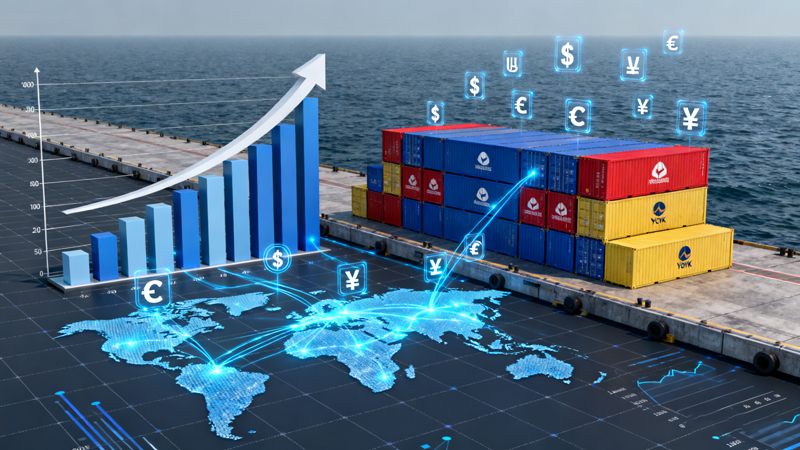Subtitle: From AI Integration to Green Mandates, the Global Toy Trade Undergoes a Fundamental Shift
December 2025 – As the final month of 2025 begins, the global toy export industry is taking a well-earned moment to reflect on a year defined by resilience, adaptation, and technological transformation. Following years of post-pandemic volatility, 2025 emerged as a period of strategic consolidation and forward-looking innovation. While challenges like geopolitical tensions and logistical bottlenecks persisted, the industry successfully navigated them by embracing new consumer demands and digital tools.

This retrospective analysis, based on trade data and expert insights, outlines the pivotal changes of 2025 and forecasts the trends that will define the toy export landscape in 2026.
2025 in Review: The Year of Strategic Pivots
The dominant narrative of 2025 was the industry's decisive move beyond reactive modes and into a proactive, data-driven future. Several key shifts characterized the year:
The "Smart & Sustainable" Mandate Went Mainstream: Consumer demand for eco-friendly products evolved from a niche preference to a baseline expectation. Exporters who successfully pivoted saw significant gains. This wasn't limited to materials; it extended to the entire supply chain. Brands that could verifiably trace product origins, utilize recycled plastics, and employ minimalist, plastic-free packaging gained a competitive edge in key Western markets like the EU and North America. The groundwork for the EU’s impending Digital Product Passport regulation forced many manufacturers to digitize their supply chains ahead of schedule.
The AI Revolution in Logistics and Personalization: Artificial Intelligence moved from a buzzword to a core operational tool. Exporters leveraged AI for:
Predictive Logistics: Algorithms analyzed global shipping data to predict port congestions, suggest optimal routes, and mitigate delays, leading to more reliable delivery times.
Hyper-Personalization: For B2B clients, AI tools analyzed regional sales data to help exporters recommend product mixes tailored to specific markets. For B2C, we saw a rise in AI-powered toys that adapt to a child's learning pace.
Supply Chain Diversification Became Entrenched: The "China Plus One" strategy solidified in 2025. While China remains a manufacturing powerhouse, exporters significantly increased sourcing and production in countries like Vietnam, India, and Mexico. This was less about cost and more about de-risking and achieving nearshoring benefits, especially for companies targeting the North American market.
The Blurring of Physical and Digital Play: The export of traditional physical toys increasingly incorporated digital elements. Toys-to-life products, AR-enabled board games, and collectibles with QR codes linking to online universes became standard. Exporters who understood this "phygital" ecosystem created more engaging products and built stronger brand loyalty.
2026 Forecast: The Trends Set to Dominate the Toy Export Market
Building on the foundations laid in 2025, the coming year is poised for accelerated growth in specific, targeted areas.
Regulatory Hurdles as a Competitive Advantage: In 2026, compliance will be a key differentiator. The European Union’s ECODESIGN for Sustainable Products Regulation (ESPR) will begin to take effect, placing stricter demands on product durability, repairability, and recyclability. Exporters who are already compliant will find doors open, while others will face significant barriers. Similarly, data privacy regulations concerning connected smart toys will become stricter globally.
The Rise of "Agile Sourcing": The long, monolithic supply chains of the past are gone for good. In 2026, successful exporters will adopt "agile sourcing"—using a dynamic network of smaller, specialized manufacturers across different regions. This allows for faster response to trending toys (e.g., those fueled by social media) and reduces over-reliance on any single production hub.
Hyper-Targeted, Platform-Driven Exports: Social media platforms like TikTok Shop and Amazon Live will become even more critical export channels. The ability to create viral marketing moments will drive demand, and exporters will need to develop fulfillment strategies that can handle sudden, massive spikes in orders from specific regions, a phenomenon known as "flash exporting."
Educational STEM/STEAM Toys with a Focus on Wellbeing: The demand for educational toys will continue to grow, but with a new emphasis. Alongside traditional STEM (Science, Technology, Engineering, Math), expect a surge in exports of toys that promote STEAM (adding Arts) and emotional intelligence (EQ). Toys focused on mindfulness, coding without screens, and collaborative problem-solving will see increased demand from discerning parents in Europe and North America.
Advanced Personalization Through On-Demand Manufacturing: 3D printing and on-demand production will move from prototyping to small-batch manufacturing. This will allow exporters to offer retailers and even end-consumers customizable options—from a child’s name on a doll to a unique color scheme for a model car—adding tremendous value and reducing inventory waste.
Conclusion: A Maturing Industry Ready for Play
The toy export industry of 2025 demonstrated remarkable maturity, shifting from survival to strategic growth. The lessons learned in supply chain management, coupled with the adoption of AI and a genuine commitment to sustainability, have created a more resilient sector.
As we look to 2026, the winners will not be the biggest or the cheapest, but the most agile, the most compliant, and the most in-tune with the evolving demands of both children and the planet. The global playground is getting smarter, greener, and more connected, and the export industry is rising to the occasion.
Post time: Nov-21-2025



